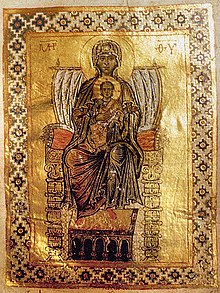Immaculate Conception: The Patroness of the Philippine Island
Immaculate Conception: The Patroness of the Philippine Island
The Immaculate Conception is a doctrine of the Roman Catholic Church in regards to Mary, Jesus’ mother. The official statement of the doctrine reads, “The blessed Virgin Mary to have been, from the first instant of her conception, by a singular grace and privilege of Almighty God, in view of the merits of Christ Jesus the Savior of Mankind, preserved free from all stain of original sin” (Pope Pius IX, Ineffabilis Deus, December 1854). Essentially, the Immaculate Conception is the belief that Mary was protected from original sin, that Mary did not have a sin nature and was, in fact, sinless.
A feast of the Conception of the Most Holy and All Pure Mother of God was celebrated in Syria on 8 December perhaps as early as the 5th century. Note that the title of achrantos (spotless, immaculate, all-pure) refers to the holiness of Mary, not specifically to the holiness of her conception.
Mary's complete sinlessness and concomitant exemption from any taint from the first moment of her existence was a doctrine familiar to Greek theologians of Byzantium. Beginning with St. Gregory Nazianzen, his explanation of the "purification" of Jesus and Mary at the circumcision (Luke 2:22) prompted him to consider the primary meaning of "purification" in Christology (and by extension in Mariology) to refer to a perfectly sinless nature that manifested itself in glory in a moment of grace (e.g., Jesus at his Baptism). St. Gregory Nazianzen designated Mary as "prokathartheisa (prepurified)." Gregory likely attempted to solve the riddle of the Purification of Jesus and Mary in the Temple through considering the human natures of Jesus and Mary as equally holy and therefore both purified in this manner of grace and glory. Gregory's doctrines surrounding Mary's purification were likely related to the burgeoning commemoration of the Mother of God in and around Constantinople very close to the date of Christmas. Nazianzen's title of Mary at the Annunciation as "prepurified" was subsequently adopted by all theologians interested in his Mariology to justify the Byzantine equivalent of the Immaculate Conception. This is especially apparent in the Fathers St. Sophronios of Jerusalem and St. John Damascene, who will be treated below in this article at the section on Church Fathers. About the time of Damascene, the public celebration of the "Conception of St. Ann [i.e., of the Theotokos in her womb]" was becoming popular. After this period, the "purification" of the perfect natures of Jesus and Mary would not only mean moments of grace and glory at the Incarnation and Baptism and other public Byzantine liturgical feasts, but purification was eventually associated with the feast of Mary's very conception (along with her Presentation in the Temple as a toddler) by Orthodox authors of the 2nd millennium (e.g., St. Nicholas Cabasilas[17] and Joseph Bryennius).
References:
https://www.gotquestions.org/immaculate-conception.html
https://en.wikipedia.org/wiki/Immaculate_Conception



Comments
Post a Comment